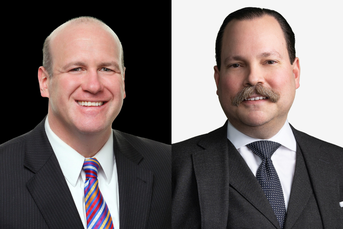SEC critics see exam process as opaque
The Securities and Exchange Commission's effort to make its investment adviser examination program more efficient is taking on…
The Securities and Exchange Commission's effort to make its investment adviser examination program more efficient is taking on new urgency with the addition of more than 1,000 private funds to its oversight universe this month.
But some in the industry question whether the SEC's so-called risk-based approach to examinations has been effective and complain that its criteria for targeting firms remain opaque.
“That process has always been a mystery,” said Mark Schonfeld, co-chairman of the Securities Enforcement Practice Group at Gibson Dunn & Crutcher LLP.
“It is hard to say whether it is calibrated to risks in the industry. If you ask the [SEC] staff, "How do you make those determinations?' they can't tell you,” Mr. Schonfeld said.
Carlo di Florio, director of the SEC's Office of Compliance Inspections and Examinations, tried to shed some light on the subject at a recent Investment Adviser Association conference.
He told attendees that risk factors include whether a firm is the subject of a tip, complaint or referral, or recently has restructured, entered a new business area, significantly changed personnel, demonstrated aberrational performance or has a history of compliance problems.
Of course, the SEC doesn't go into too much detail on its rubric, because it doesn't want to tip its hand.
LACK OF A SYSTEM
“In theory, it's wonderful,” said Brian Hamburger, managing director of MarketCounsel, a regulatory-compliance law firm.
“In practice, it's hardly existent. They don't have the system in place to identify risk,” Mr. Hamburger said.
Even after thousands of midsize investment advisers switch to state registration this summer, the SEC's adviser oversight burden won't ease.
With the addition of large private-equity and hedge funds by the end of the month, the assets under management for which the SEC is responsible are anticipated to rise to $47 trillion, from about $43 trillion now.
The SEC is seeking a $245 million boost to its $1.321 billion budget to help pay for is exam program, but there's little hope that it will get that much funding from Congress.
That is one factor forcing the SEC to make its adviser examination program more efficient. Currently, the SEC has 450 adviser examiners for about 11,700 registered investment advisers.
The SEC will jettison about 3,000 midsize advisers.
So far, about 1,250 private funds have registered with the SEC, about 300 more than anticipated. After the adviser mix changes this summer, the total number of RIAs under SEC oversight will fall to about 10,000.
Examiners will have fewer advisers to monitor, but the private funds — which the SEC is tracking to help monitor systemic risk — will add complexity to their jobs. In response, the SEC is zeroing in on advisory firms that fit a high-risk profile.
“We're not doing routine cycle exams,” Norman Champ, deputy OCIE director, said at the IAA conference. “We have to be very careful where we send these limited resources.”
For several years, the SEC has been using risk analytics to target firms. That approach is taking on new urgency now that the private funds are arriving.
But there is a debate on how the SEC should proceed.
The SEC should continue to do both risk-based and routine exams, according to Christopher Cordaro, chief executive of RegentAtlantic Capital LLC.
If the SEC wants to streamline, it should cut back on the amount of time it spends at any one firm, he said.
“I still like the concept of a surprise exam, but one that is shorter, one that is more compact,” Mr. Cordaro said.
The SEC should be “looking for evidence of wrongdoing rather than trivial procedural issues,” he said.
Mr. Di Florio maintains that the SEC is homing in on the areas that it monitors, rather than following a broad-based approach into the minutiae.
For instance, the agency is taking a hard look at fiduciary duty related to complex structured products, such as alternative mutual funds, he said.
Red flags also go up if the SEC detects firms' treating some clients better than others. Those that claim superlative performance also could be designated as high-risk.
“Where we're really focused on is preferential treatment, whether it's in how opportunities are allocated, [how] fees and expenses are allocated,” Mr. Di Florio said.
The SEC is using “risk analytics to identify fraud, whether it's aberrational performance, unknown service providers or other custody arrangements that suggest increased risk of fraud,” he said.
A HOLISTIC APPROACH
Mr. Di Florio also said that the SEC is taking a holistic view of compliance and sitting down with a firm's officers to “start a dialogue” about following securities regulations.
“It gives us a chance to assess the tone at the top and the culture of the firm and those who are driving that culture,” he said. “We want to make sure we're engaging the leadership in compliance, risk management, financial control and internal audit.”
Although the holistic approach is gaining currency, and routine exams have fallen out of favor, that doesn't mean that financial advisers should relax, Mr. Schonfeld said.
“Nobody should breathe easier, because you can't reliably predict when or whether you'll be examined,” said Mr. Schonfeld, a former director of the SEC's New York regional office. “You need to conduct the business as if you'll be examined at any time.”
That uncertainty is the SEC's secret weapon.
“At the end of the day, their most effective exam tactic is the fear of regulatory examination,” Mr. Hamburger said.
Learn more about reprints and licensing for this article.








